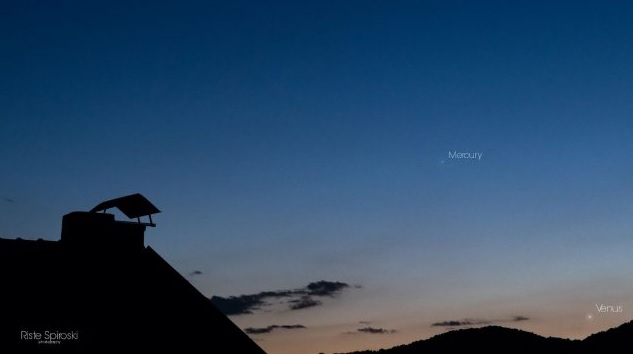On Friday, 28 May, Mercury, and Venus will look closer to each other immediately after sunset in the west-northwest sky. They can be hard to detect. See Mercury on Venus’ left-hand side. (Starry Night Image Credit). Venus and Mercury will meet on the night sky Friday (28 May) for their closest meeting up to 5 November 2033 if you’re up to an observation challenge. According to EarthSky, during about 30 to 40 minutes, the duo of planets in the western sky is visible low. Observation will be difficult since you can compete with skyscrapers and air pollution to view the world. Sky & Telescope says you go west-northwest and start with the luminous stars Pollux and Castor, the heads of Gemini’s “twin” constellation. Just under Pollux and to your left, if you look nude, you’ll see Mars.
The brightest planets in the night sky in May: (and when)
Follow Gemini to the right, and observe Mercury and Venus at a distance from one another, only 0,4 degrees slightly below and right. (Betelgeuse, the bright red star, is only a little higher than the horizon so that you can see this also. You will probably view Venus first as it brilliantly shines -3.8, which is equivalent to the best of the international space station. Sky & Telescope reported, “Mercury is dwindling to just a +2.3 magnitude, just 1/275 bright. “Then, pick up Mercury from the skyglow with binoculars or a telescope.”
A few days before Venus continues to ascend from the sun and Mercury drops towards the horizon, the planets will be reasonably near in the sky. In late June or early July 2021, Mercury will return as a “star” in the morning, but Venus will remain the “star” by 2021. Conjunctions such as the encounter of Venus and Mercury are frequent sky phenomena, as planets in their separate orbits conform to Earth. There are a few additional night sky occurrences that you may enjoy over Memorial day weekends: a double shadow transit in Jupiter (Friday, 28 May) and a gibbous moon in the predawn sky between Saturn and Jupiter on Monday (May 31).
Mercury
For this month’s mid-north observers, the minor planet has its most favorable appearance this year. This reddish planet is an accessible object with naked eyes, an excellent opportunity, except the final week of May. Find a place with a clear view westward and start watching after sunset for about half an hour. As the creek deepens, the planet becomes easier to view. This month Mercury begins very brilliantly, shiny in size -1.1. However, when the lighted part of its disc shrinks on 24 May, the magnitude reduces by about 0,1 each day to +1,5.



:quality(85)/cloudfront-us-east-1.images.arcpublishing.com/infobae/NP5NEZXMZFGNLBHNEQJHPJVMKM.jpg)
:quality(85)/cloudfront-us-east-1.images.arcpublishing.com/infobae/JVEG643FOJGGJFSNY3RS7DZM4I.jpg)

